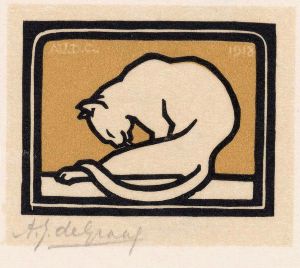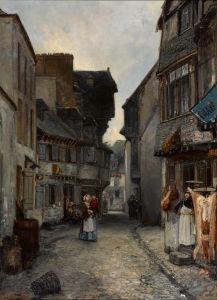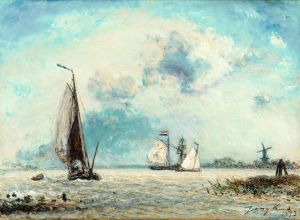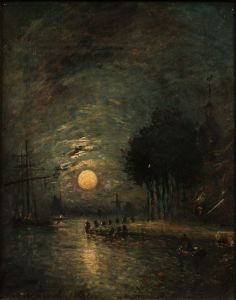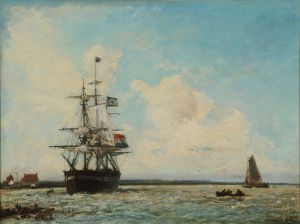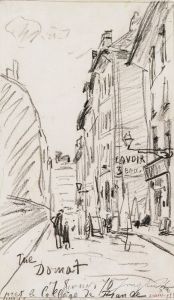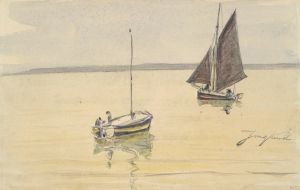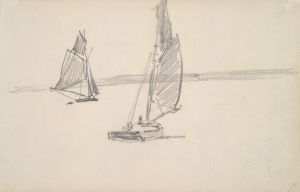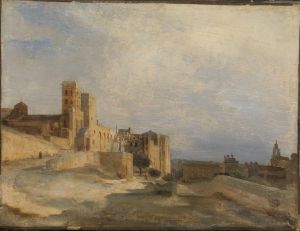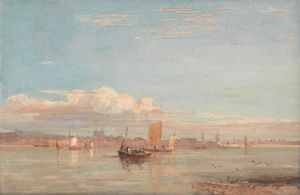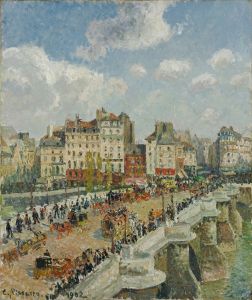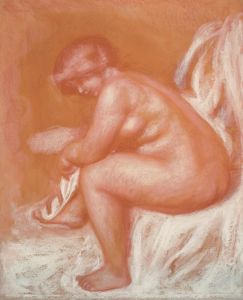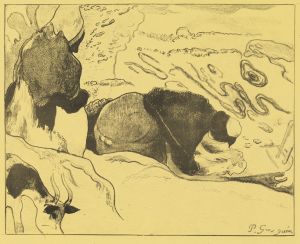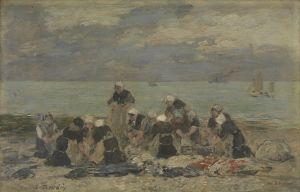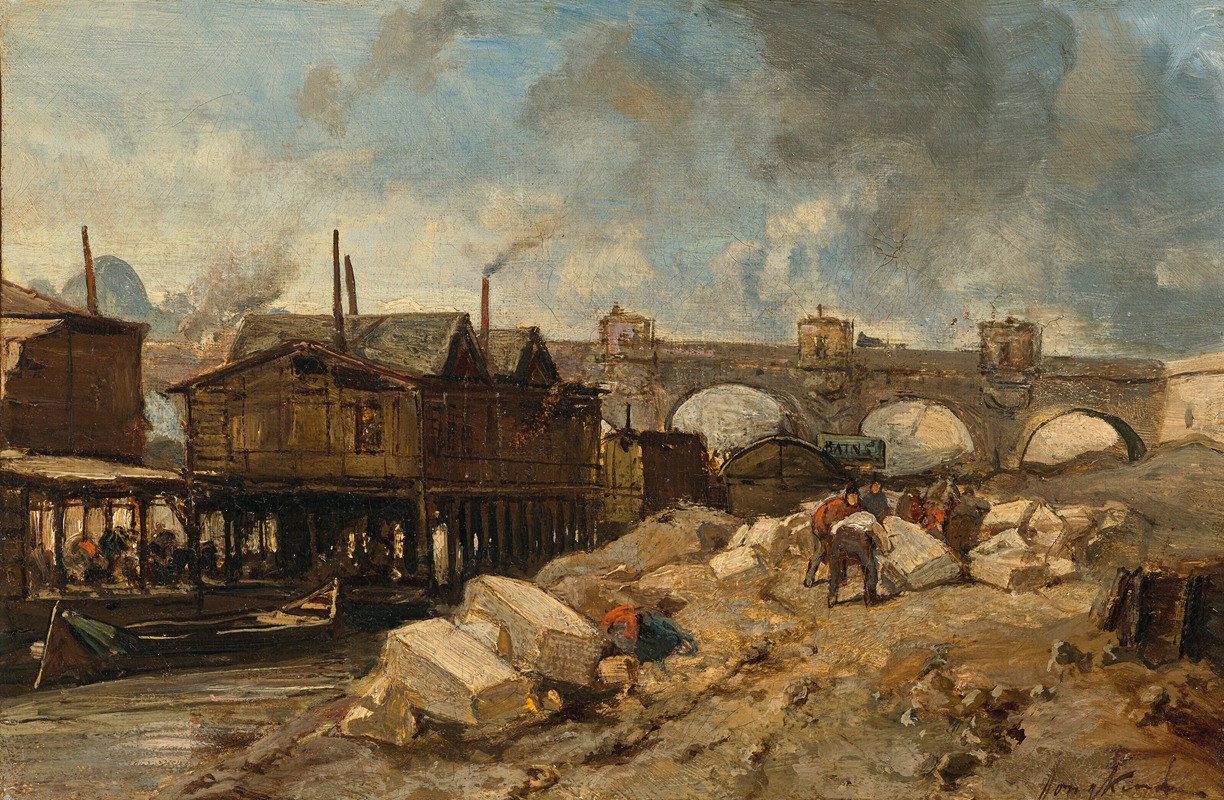
Bain, bateaux-lavoirs près du Pont-Neuf
A hand-painted replica of Johan Barthold Jongkind’s masterpiece Bain, bateaux-lavoirs près du Pont-Neuf, meticulously crafted by professional artists to capture the true essence of the original. Each piece is created with museum-quality canvas and rare mineral pigments, carefully painted by experienced artists with delicate brushstrokes and rich, layered colors to perfectly recreate the texture of the original artwork. Unlike machine-printed reproductions, this hand-painted version brings the painting to life, infused with the artist’s emotions and skill in every stroke. Whether for personal collection or home decoration, it instantly elevates the artistic atmosphere of any space.
Johan Barthold Jongkind's painting Bain, bateaux-lavoirs près du Pont-Neuf is a work by the Dutch-French artist, who is widely recognized for his contributions to 19th-century landscape painting and as a precursor to the Impressionist movement. The title of the painting translates to "Bathing, Laundry Boats near the Pont-Neuf," indicating its subject matter: a scene along the Seine River in Paris, featuring the iconic Pont-Neuf bridge and the bateaux-lavoirs, or laundry boats, that were once a common sight on the river.
Jongkind, born in 1819 in the Netherlands, moved to France in the 1840s, where he became known for his atmospheric depictions of urban and rural landscapes. His works often captured the interplay of light and water, and he was particularly drawn to scenes along rivers and canals. In this painting, Jongkind portrays a bustling riverside activity, with figures engaged in bathing and laundry work, set against the backdrop of the Pont-Neuf, one of Paris's most famous landmarks.
The bateaux-lavoirs were floating laundry boats equipped with washing facilities, used extensively in 19th-century Paris before the advent of modern washing machines. These boats were moored along the Seine and provided a vital service to the city's residents. Jongkind's depiction of these boats reflects his interest in everyday life and his ability to document the changing urban environment of Paris during this period.
Jongkind's style in this painting demonstrates his mastery of light and atmosphere, which influenced many Impressionist painters, including Claude Monet. While Jongkind is often associated with the Barbizon School and early Impressionism, his work retains a distinct quality, blending precise observation with a loose, expressive technique. His use of color and brushwork in Bain, bateaux-lavoirs près du Pont-Neuf captures the shimmering reflections on the water and the lively activity along the riverbank.
The exact date of the painting is not specified, but it is consistent with Jongkind's body of work from the mid-19th century, a time when he frequently painted scenes of Paris and its surroundings. The painting exemplifies Jongkind's ability to combine topographical accuracy with a poetic sensibility, making it both a document of its time and an enduring work of art.
As with many of Jongkind's works, Bain, bateaux-lavoirs près du Pont-Neuf reflects his fascination with the interplay of natural and urban elements, as well as his keen eye for capturing transient moments of light and movement. The painting remains an important example of Jongkind's contribution to the development of modern landscape painting.





